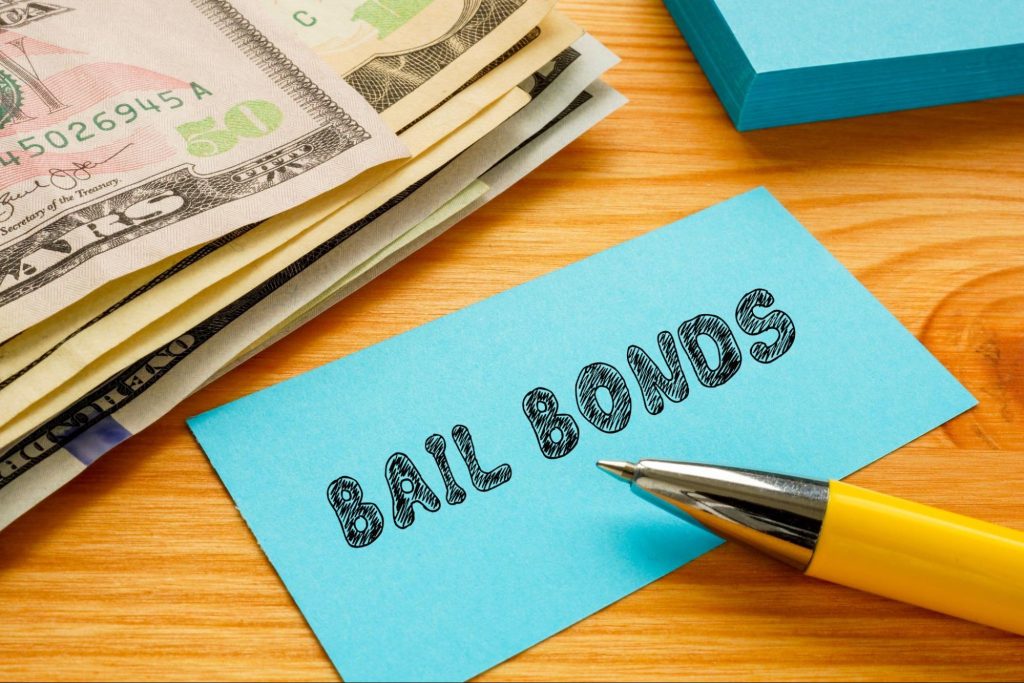A Comprehensive Take A Look At the Bail Bonds Process in Los Angeles
A Comprehensive Take A Look At the Bail Bonds Process in Los Angeles
Blog Article
How Bail Bonds Work: A Detailed Introduction
Bail bonds play an important duty in the lawful procedure by giving a system for people to safeguard their launch from custody while awaiting trial. Comprehending the details of just how bail bonds work, consisting of the functions of courts, bail bondsmensman, and the different charges entailed, can be crucial for any person navigating this complicated system. As we discover the various kinds of bail bonds and the aspects that influence their costs, it becomes obvious that the responsibilities connected to these contracts prolong far past plain monetary transactions. What implications do these responsibilities hold for accuseds and their households?
What Are Bail Bonds?
Bail bonds are often made use of in the criminal justice system as an economic assurance that a charged person will show up in court as called for. When an individual is apprehended, a judge may set a bond quantity based upon different variables, including the intensity of the infraction, the accused's criminal background, and the danger of trip. If the accused can not manage the bail quantity, they might look for the assistance of a bondsman.
A bail bond is an agreement between the defendant, the bail bondsman, and the court, ensuring that the defendant will meet their lawful responsibilities. For a fee, generally a portion of the overall bail amount, the bondsman supplies the court with a surety that ensures the bail. If the accused falls short to appear in court, the bail bondsman is accountable for paying the full bail total up to the court, which may lead them to seek the defendant for recovery.
Bail bonds serve to facilitate the launch of people waiting for test, enabling them to keep their employment and family members obligations while ensuring compliance with court appearances. This system is important to balancing the rights of the accused with the interests of public safety and security and judicial integrity.
The Bail Process Clarified
After recognizing the function of bail bonds in the criminal justice system, it is essential to detail the bail process itself. The bail procedure starts when an individual is apprehended and taken into wardship. Adhering to the arrest, the offender is generally brought prior to a court for a first hearing, where the judge will figure out whether to give bail and established the amount.
If bail is given, the accused has a number of options to safeguard their launch. They may pay the complete bail quantity in cash, which is returned upon the completion of their court obligations. The accused can look for the help of a bond bondsman, that bills a non-refundable charge-- normally a portion of the overall bail amount-- to publish bail on their behalf.
Once bail is published, the accused is launched from custodianship with the understanding that they must go to all scheduled court appearances. Falling short to appear can lead to the forfeit of the bail and additional lawful consequences. The procedure ends when the instance is solved, whereupon the bail is either returned or retained by the bail bondsman as settlement for their services.

Kinds Of Bail Bonds
When it comes to securing a launch from custody via bail bonds,Countless choices exist. Comprehending the various types can aid defendants and their families make notified selections.
The most typical kind is the surety bond, which includes a third-party bail bondsmansman that ensures the full bail total up to the court in exchange for a non-refundable charge, normally around 10% of the bail amount. This alternative is extensively made use of due to its access for people that may not have the financial means to pay the full bail upfront.
An additional kind is the cash bond, where the accused or a co-signer pays the overall bail quantity in money directly to the court. Upon effective completion of the situation, the funds are refunded, minus any kind of relevant fees.

Last but not least, migration bonds are specifically made for people apprehended by immigration authorities, promoting their release while they wait for legal proceedings. Each type of bail bond serves distinctive purposes, satisfying numerous conditions and requires within the legal system.
Elements Influencing Bail Costs
Several vital aspects influence the general cost of bail, establishing just how much a defendant or their family members may require to pay for release. Among the main factors is the extent of the fees. Felony fees usually result in greater bail quantities compared to offenses as a result of the viewed risk of flight and the prospective consequences of the infraction.

The accused's monetary circumstance can additionally affect the bail amount. Courts may take into consideration a defendant's revenue and possessions when determining bail, possibly bring about higher prices for those with higher monetary resources. Finally, the availability of collateral might impact the necessary payment. If a bail bondsman views a higher risk, they may set a higher costs, further raising the expenses related to protecting a bail bond. Understanding these aspects can help defendants and their families prepare for the economic ramifications of securing bail.
Duties of the Indemnitor
Once bail has been safeguarded, the duties of the indemnitor, or the individual that consents to find out here back the bail bond, entered into play. The indemnitor is largely liable for making certain that the defendant participates in all set up court appearances. Failing to do so might lead to the forfeiture of the bail bond and potential legal consequences for the indemnitor.
Additionally, the indemnitor is bound to pay off the bail bond firm the full quantity of the bond if the defendant fails to show up in court. This includes any fees or costs sustained by the bail representative in recouping the defendant, which might additionally escalate the monetary concern on the indemnitor.
The indemnitor has to likewise keep open communication with both the offender and the bail bondsman, supplying any type of essential updates associated with the offender's scenario. It is crucial for the indemnitor to stay knowledgeable about the lawful commitments and consequences connected with the bail bond, as ignorance might result in unintentional liabilities.
Verdict
In summary, bail bonds function as an important device within the criminal justice system, assisting in the release of accuseds while their explanation ensuring their appearance in court. Understanding the different kinds of bail bonds, the complexities of the bail process, and the elements affecting bail costs is essential for browsing this facility landscape. In addition, understanding of the duties borne by the indemnitor highlights the value of educated decision-making when engaging with bail bond services.
Comprehending the intricacies of just how bail bonds function, consisting of the functions of courts, bail bondsmen, and the various costs entailed, can be crucial for any person browsing this complex system.After recognizing the duty of bail bonds in the criminal justice system, it is vital to describe the bail procedure itself. The accused can seek the aid of a bail bondsman, who charges a non-refundable cost-- generally a percent of the complete bail quantity-- to publish bail on their part.
If a bail bondsman views a higher risk, they might set a greater costs, additional increasing the expenses linked with securing a bail bond. Recognizing the various kinds of bail bonds, the complexities of the bail procedure, and the variables affecting bail expenses is necessary for navigating this complex landscape.
Report this page